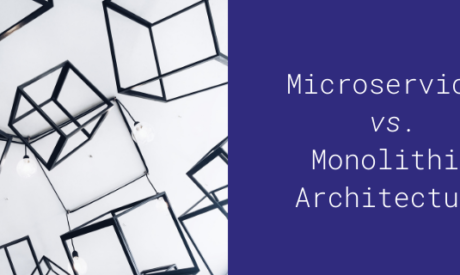Event Streaming
Overview
Refers to the process of capturing, storing, and processing real-time events and data streams. It involves the continuous flow of events, such as user interactions, system events, or sensor readings, which are generated by various sources and processed in near real-time. Event streaming systems are designed to handle high volumes of data and provide a scalable and efficient way to process and analyze events as they occur.
Event Streaming - Benefits
-
Real-time Insights
Event streaming allows organizations to gain immediate insights from streaming data, enabling timely decision-making and the ability to respond quickly to changing conditions.
-
Scalability and Flexibility
Event streaming platforms are designed to handle high data volumes and can scale horizontally, accommodating growing workloads while providing flexibility in data processing and consumption.
-
Fault Tolerance and Resilience
Event streaming systems are built to be resilient, with distributed architectures and replication techniques that ensure high availability and data durability, minimizing the risk of disruptions.
-
Event Persistence and Replay
Events are stored for a specific period, allowing organizations to replay events, perform retroactive analysis, and gain insights from historical data.
-
Event-Driven Architecture
Event streaming promotes an event-driven architecture, where applications communicate asynchronously through events. This architecture enables loose coupling, making systems more modular, flexible, and easier to integrate and evolve.
-
Stream Processing and Analytics
Event streaming platforms often offer stream processing capabilities, enabling real-time transformations, aggregations, and analytics on event streams. This empowers organizations to derive meaningful insights and perform computations in real time.
-
Event-Driven Workflow Orchestration
Event streaming enables the coordination of complex workflows and business processes. Events can trigger actions, workflows, or business rules, automating processes and enabling organizations to respond to events automatically.
Event Streaming - Features
-
Asynchronous Communication and Loose Coupling
Event streaming enables asynchronous communication between components, promoting loose coupling, flexibility, and easier integration between systems.
-
Event Replay and Retroactive Analysis
Event streaming platforms allow organizations to replay events and perform retroactive analysis, facilitating debugging, auditing, and historical data analysis.
-
Fault Tolerance and Data Durability
Event streaming systems employ distributed architectures and replication techniques to ensure fault tolerance and data durability, minimizing the risk of data loss or service disruptions.
-
Event-Driven Workflow Automation
Event streaming facilitates the automation of complex workflows and business processes by triggering actions, workflows, or business rules based on specific events or event patterns.
-
Integration with Existing Systems and Tools
Event streaming platforms seamlessly integrate with existing data systems, databases, analytics tools, and other applications, enabling smooth data integration and interoperability.
Event Streaming Ecosystem Components
The Event Streaming ecosystem refers to the collection of technologies, frameworks, tools, and platforms that are used in conjunction with event streaming to build, manage, and analyze event-driven systems. It encompasses a wide range of components that support the entire lifecycle of event streaming, from event generation and ingestion to processing, storage, and consumption.
Event Streaming Ecosystem
Technologies and Frameworks shaping the future
-
Event Streaming Platforms
These are the core components of the ecosystem that provide the infrastructure for event streaming.
-
Event-driven Microservices Frameworks
Event-driven architectures often rely on microservices for building modular and scalable systems.
-
Stream Processing Frameworks
Stream processing frameworks enable real-time processing and analysis of event streams. They provide libraries, APIs, and tools for performing computations, transformations, aggregations, and analytics on streaming data.
-
Development and Testing Tools
The ecosystem also includes development and testing tools that help in building, debugging, and testing event streaming applications.
The Event Streaming ecosystem is continuously evolving, with new technologies and tools being developed to enhance the capabilities, scalability, and usability of event-driven systems. It provides a rich set of resources for organizations to leverage event streaming and build innovative, real-time applications.
Event Streaming Consultation
Book Your Free Session
Sumerge team has achieved new heights of technological advancements with Event Streaming and our team is here and ready to completely help out. Click the button below and get a free consultation and learn everything you need to know to get the gears in shift.
Let’s conquer new grounds!
IPN Payment Gateway Consultation
Book Your Free Session
Sumerge team has achieved new heights of technological advancements with IPN Payment Gateway and our team is here and ready to completely help out. Click the button below and get a free consultation and learn everything you need to know to get the gears in shift.
Let’s conquer new grounds!
AlexBank's IPN Payment Gateway Journey
Earlier, we at Sumerge partnered with AlexBank and implemented our state of the art IPN Payment Gateway solution. Where we built a Microservices architectural solution to deliver the IPN services to be the trigger for Alexbank digital transformation strategy. We’re excited to join hands with many more major market players and help kickstart IPN services and solutions within the Egyptian market!
You May Also Be Interested In

Why should you adopt Red Hat OpenShift for Microservices?
- Posted by Adham Jan
- On September 14, 2021
In the age of Modernization and Digitization the move away from Monolithic Architecture has been well underway, with exponentially increasing adoption worldwide...

Microservices Adoption – Key for Banks’ Survival
- Posted by Adham Jan
- On May 27, 2021
With the strategic objective of banks being to deliver a unique customer experience, digital transformation has become a key topic in the...

Microservices vs. Monolithic Architecture
- Posted by Adham Jan
- On November 16, 2020
When you hear the term “Microservices,” you often hear it in conjunction with the word “Monolithic,” when talking about software design. You...


